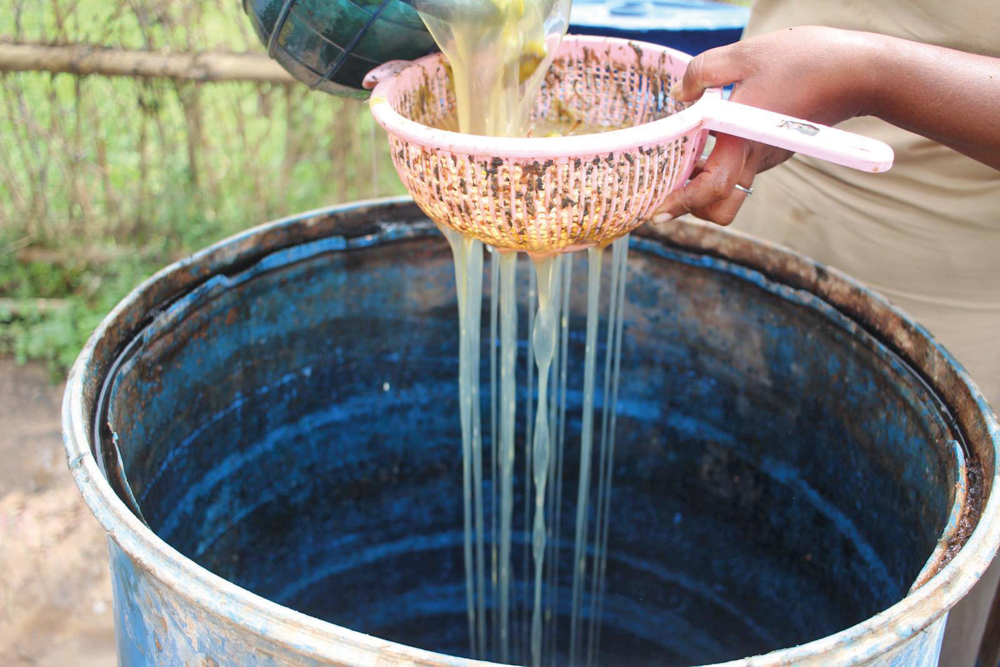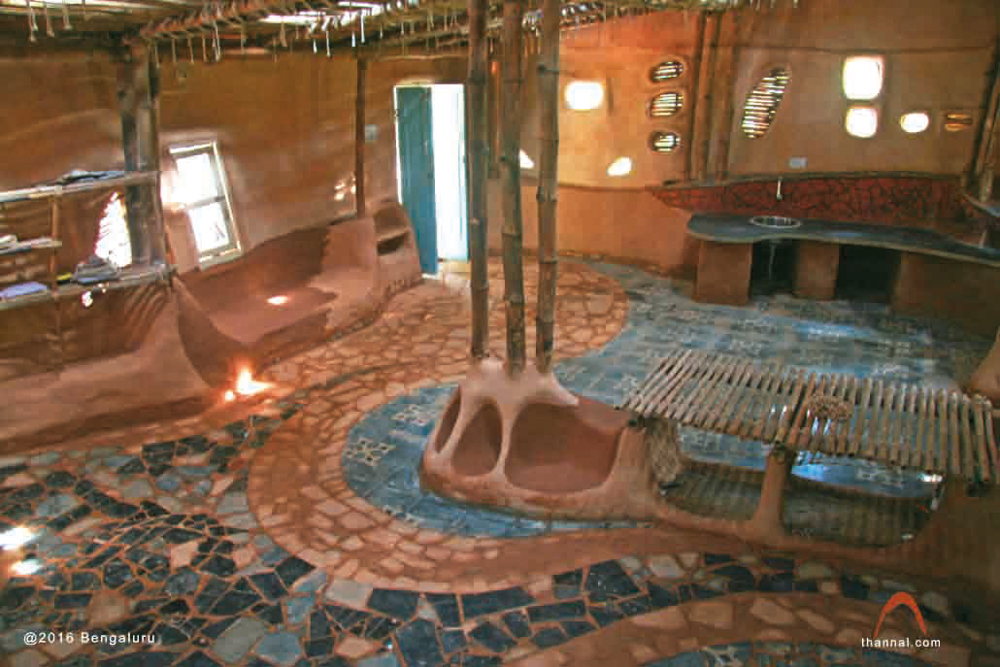Coutesy- The Alternative
Self sustainable people
Sittlingi valley, a tribal settlement in Tamil Nadu, is today an
amazing example of how a system of beliefs, well-intentioned people,
and patient, sustained hard work can help a community seek its own
solutions for life improvement.
I have always been interested and intrigued by the colourful
handicraft work of rural artisans. A call for volunteers to help an
artisan collective called Porgai and a chance meeting with Dr.
Sukanya, trustee at Tribal Health India (THI), an NGO that worked in
the Dharmpuri district of Tamil Nadu,for a sustainable tribal welfare,
took me right to Sittlingi valley, amidst the scenic Nilgiris
mountains, to meet and understand the people behind the weaves.
THI_waitingarea
Community based healthcare. The waiting area outside the THI hospital
A 5-hour drive from Bangalore through the Hosur – Krishnagiri – Salem
route, Sittlingi is a land of tribals, the local Kalrayan people as
well as the Lambanis, who have migrated here from from Rajasthan,
Andhra Pradesh and other parts of India.
A valley that can take care of itself
Nestled between two hill ranges – Kalrayan and Sitteri, Sittlingi was
once a back of beyond place with no roads to connect villages with the
nearby towns. For any medical consultations or even emergencies, the
tribal folks living here had to travel by foot through the surrounding
forests to reach either Salem or Dharmapuri.
The arrival of the doctor couple, Dr. Reji and Lalitha, changed the
face and fortunes of Sittlingi. Over the last 16 years, the doctors
have worked not only to establish a tribal hospital at Sittlingi, but
also in helping the community maintain good health, re-vitalize their
farming practices, preserve their culture and ensure that they are
self-sustained.
An earlier piece on The Alternative talks about how the health and
lives of the tribal folk has changed for the better after Tribal
Health Initiative was set up here. My effort was to go find out what
next and what the valley looked like today.
THI_solar
Solar panel installation provide renewable power in the Kalrayan hills.
Tools in the hands of the people
Sittlingi, with the help of THI, proves how all it takes is a bunch of
simple, well thought through initiatives to ensure that a village can
bring life improvement for its people. Sittlingi has implemented
– A yearly insurance scheme for elders, where each of them pays Rs. 30
for a year, which includes hospital admissions, treatment, food, stay
and every expense incurred at the hospital.
– Low cost medicines, procured from LOCOST, a drug manufacturing
social enterprise a Baroda, with drugs costing almost 1/4th to 1/10th
of the MRPs at local pharmacies.
– Community health programs where doctors and health workers travel to
the villages to speak to people and spread awareness of the various
diseases
– An incinerator to take care of the huge amount of medicine waste
that is generated and can become a bio-hazard for the area.
– Provisions for the local patient attendants to cook their own food
if they preferred.
– Solar panels used for storing energy and to act as power backup.
Providing high quality healthcare in the hill district is Dr. Ravi,
who decided to settle back in Sittilingi after travelling around the
world with his wife (who holds an MSc in Nursing) and their
three-year-old daughter. They have opened up a little training centre
for the health workers at the hospital. A Delhi-based architect and
his wife have decided to move down to Sittilingi to set up and run an
alternative school for the children of the local tribes.
A small community television box provides entertainment, news and
awareness during evening chai sessions with patient attendees and
visitors.
THI_TV
The community TV that beams awareness and entertainment programs at
the hospital.
The other side of progress
That progress and policy can indeed impact healthcare is visible when
one talks to Dr. Lalitha. When asked about challenges in helping the
people of Sittlingi sustain, Dr. Lalitha spoke of some interesting
developments that inadvertently became obstacles to be sorted out:
The road: A road built to connect Sittlingi with Salem enabled people
to travel easily and get a first hand view of what is happening in
bigger cities. Food habits changed based on what they observed in
other places, which saw a slow increase in health related problems.
Stop millets, grow rice: The farmers used to grow millets, well known
for their nutritional value, around the valley. Government policies,
aimed at the betterment of the poor, started introducing rice at Re. 1
a kilo, and then free rice for the poor. Farmers were encouraged to
grow cash crops to earn more and stop growing millets. The downside?
There ended the track leading to good health.
The push towards instutional delivery: THI doctors encourage
deliveries at the homes of the tribal people, assisted by health
auxiliaries and doctors if and when necessary. This ensures good
health of both the mother and the baby after birth, thus reducing the
infant mortality rate. Here again, introduction of incentives by the
Government – Rs. 12000 to the mother if the child is delivered in a
PHC, when the PHCs have poor facilities here and no qualified doctors
or nurses – worsened the problem.
No permanent job: The farmer works 4 months in a year on his farms.
For the remaining 8 months, in the absence of a daily wage or income,
he is forced to migrate to other cities and towns. This has the
fallout of introducing new diseases that farmers tend to catch due to
their travels. For e.g, tuberculosis was unheard of in Sittilingi due
to environmental conditions, until the migration to other places
happened. People came back to the valley with such diseases.
THI_Porgai
Bags, jewel cases and other accessories made by the Lambani artisan
collective at Sittlingi.
Stemming migration
Porgai, one of the recent THI initiated efforts, translates to pride
in the language of the locals. To address the problems of health due
to migration, the doctors started to think about how to help people
stay back in their villages with a stable daily wage, so that they
wouldn't have go looking for jobs elsewhere 8 months in a year.
This led to reviving Lambani embroidery among the women that they have
always been conversant with. Dr.Lalitha helped them to be in sync with
the latest trends and colour combinations.
Going back to Swadeshi roots, another unique effort here has been to
encourage the people of Sittilingi to produce their own cotton, which
they use to weave and tailor into kurtas / tops etc; the women then
embroider these tops.
I came away from Sittlingi filled with admiration for the wonderful
work done here as well as a bunch of ideas and perspectives around
development. Sittlingi valley is today an amazing example of how a
system of beliefs, well-intentioned people, and patient, sustained
hard work can support a community that can aspire for a better life
and seek its own solutions to implement it.
View our sitemap


















